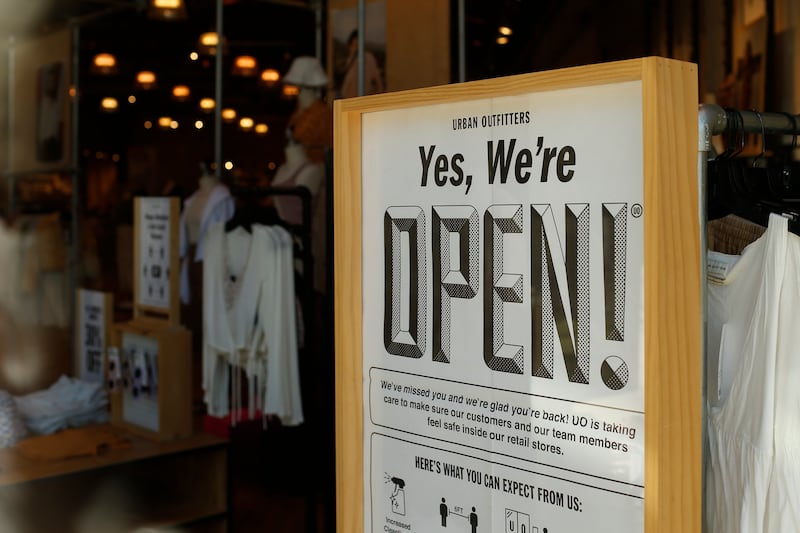On Wednesday, total deaths in the U.S. from COVID-19 raced past 73,000, making earlier predictions of 100,000 or more eventual deaths sound, perhaps, optimistic. The website worldometers.info reports that, of all the cases resolved so far, 26% have resulted in death, with 74% ending in recovery.
Those are raw facts. What is not known is whether relaxing restrictions on stay-home orders and business closures in many states will result in a second, higher wave of illness. What is not known is whether any state’s economy can rebound and grow amid rising illness and casualties.
To many politicians, activists and casual observers, the nation is facing a choice between saving the economy and saving lives. That is a false choice.
In Utah and elsewhere, public officials must keep a close eye on the spread of COVID-19 and be prepared to clamp down again if figures rise. The virus has not disappeared just because the state has moved to a less-restrictive phase.
Business cannot be conducted as usual during life-threatening pandemics. Even without government edicts, people would stop shopping and seclude themselves from human contact. Such behavior describes virtually any pandemic in recorded history.
One of the top priorities of any government is to protect the welfare of its citizens. Pandemics, because of their rarity, can be jarring to free societies. Protecting the general welfare often requires restricting movement and interaction in order to keep disease from spreading.
This gives rise to conspiracy theories and misgivings about political power plays. Some resent the role unelected health experts play in this process, although tolerance for their suggestions seems to rise in proportion to a pandemic’s severity.
That’s why, at the height of the 1918 influenza pandemic, when Utahns were confined to their homes and all events canceled, the Salt Lake Telegram said in an editorial, “The health authorities should consider themselves all powerful at this time and demand whatever is necessary to prevent the further sacrificing of lives.”
Conversely, when health efforts are successful, some become suspicious and believe those measures were unnecessary. To health officials, no pandemic response strategy can result in total victory in the court of public opinion. Victory comes only from saving as many lives as possible.
Writing for The Atlantic recently, Harvard professor Arthur Brooks said many people confuse uncertainty with risk. Uncertainty cannot be managed. Risk, however, can be measured and controlled. Too many people try to convert uncertainty into risk, but that is impossible where too much is unknown.
Anyone who watches headlines knows how uncertain experts are about the facts surrounding COVID-19, the way it is transmitted and the ways people can protect themselves from contracting it.
Critics will note that society often engages in the tradeoff between freedom and the risks to life. If speed limits were set to 25 mph on freeways, the nation would experience far fewer fatal traffic accidents. But because such a low speed limit would be considered intolerably slow, we “accept” approximately 40,000 traffic deaths per year.
But while this may be true, society works hard to reduce that number through safety measures, better highway construction and campaigns against impaired driving.
Regardless, the comparison is flawed. Traffic rules are an inescapable part of everyday life. A pandemic is a rare and temporary event, the seemingly random nature of which will destroy economic activity if left unchecked.
The nation’s best bet remains to follow the wisdom of experts who are gradually coming to understand COVID-19.

